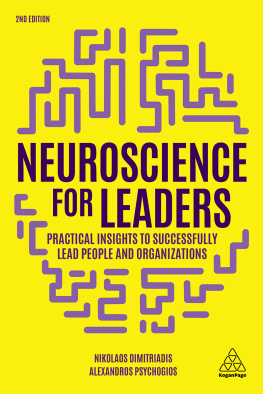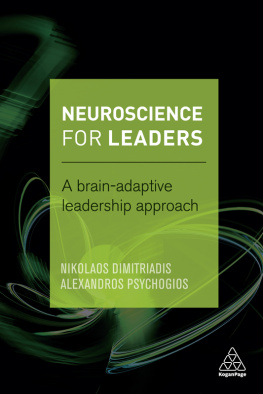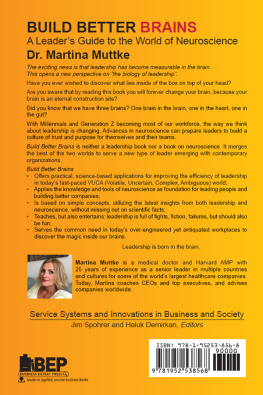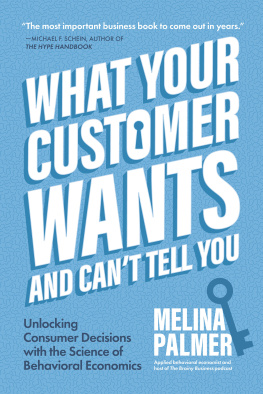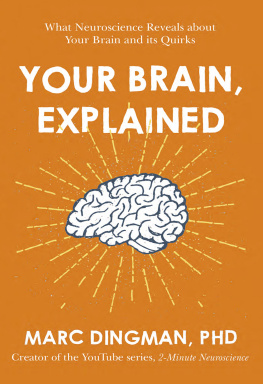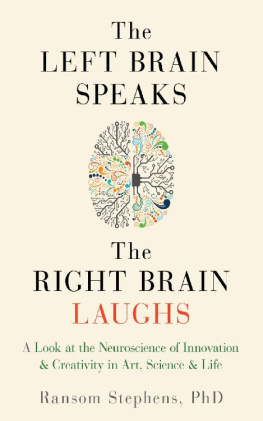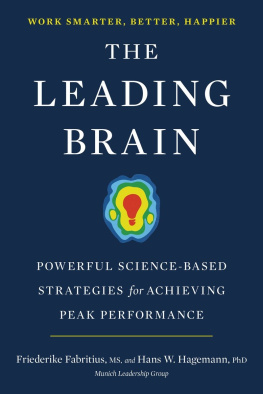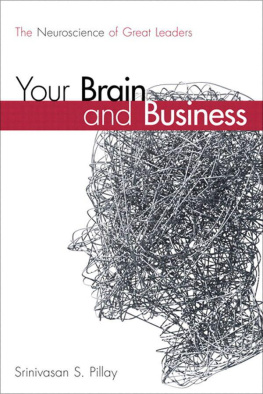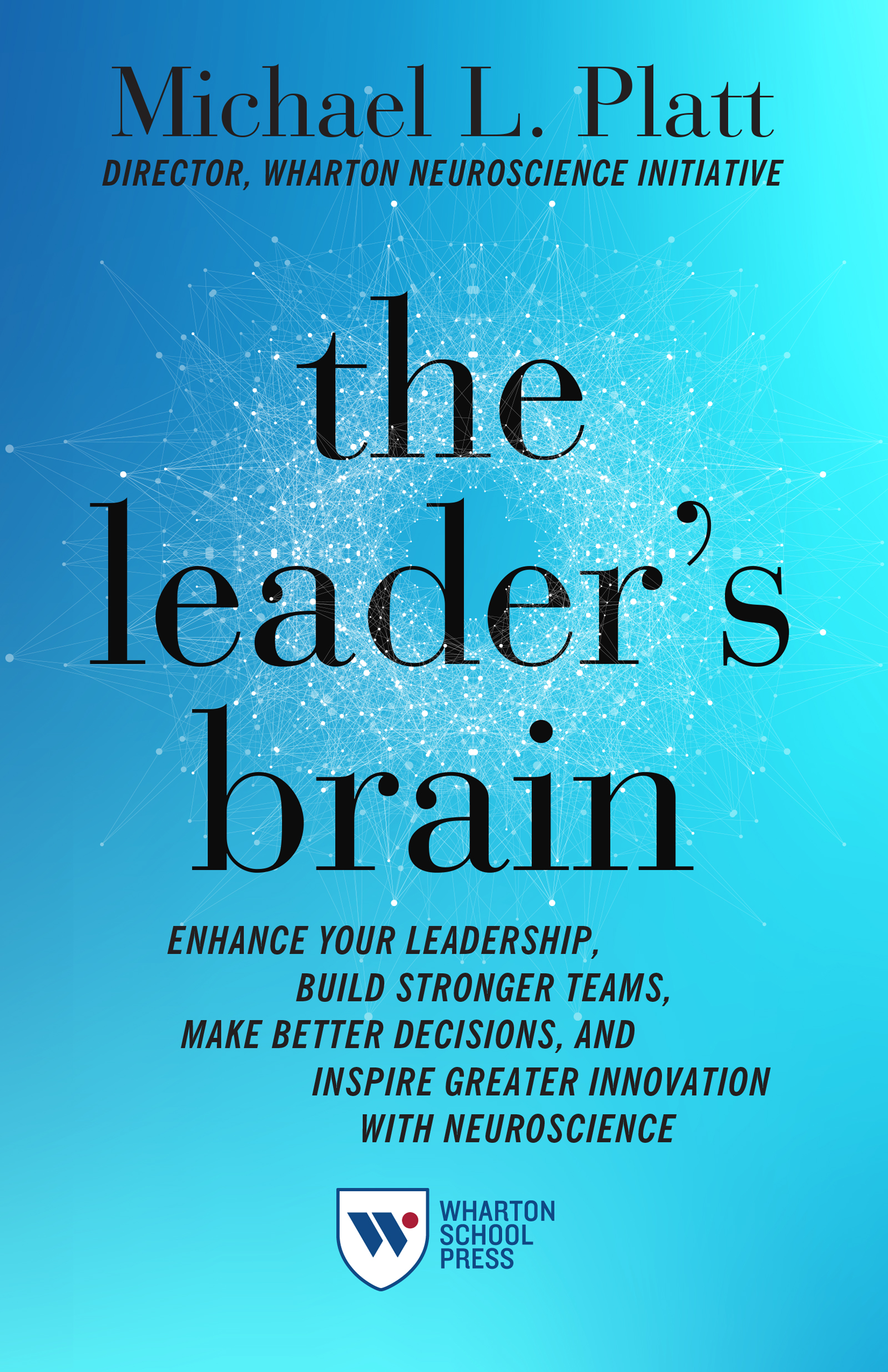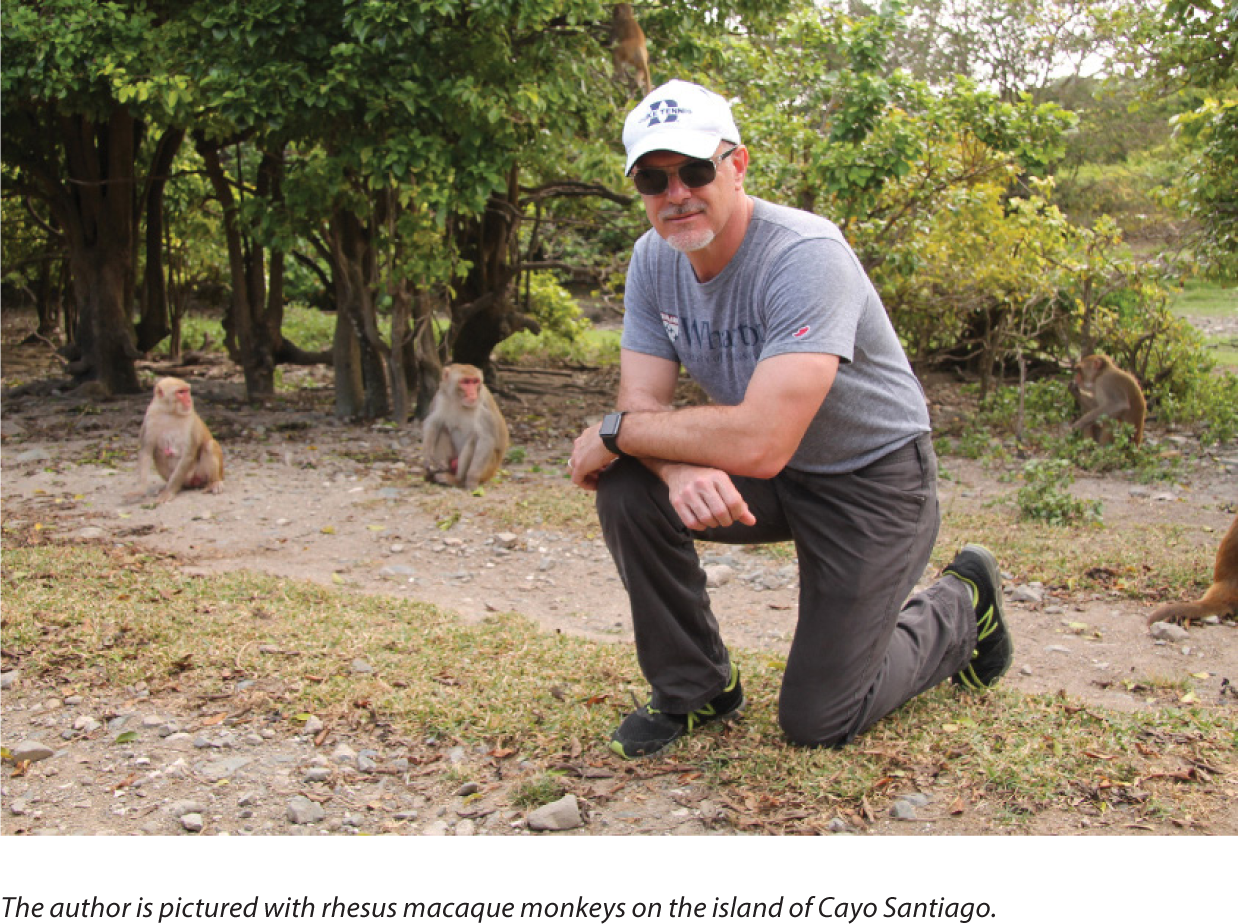Michael Platt - The Leaders Brain: Enhance Your Leadership, Build Stronger Teams, Make Better Decisions, and Inspire Greater Innovation with Neuroscience
Here you can read online Michael Platt - The Leaders Brain: Enhance Your Leadership, Build Stronger Teams, Make Better Decisions, and Inspire Greater Innovation with Neuroscience full text of the book (entire story) in english for free. Download pdf and epub, get meaning, cover and reviews about this ebook. year: 2020, publisher: Wharton School Press, genre: Politics. Description of the work, (preface) as well as reviews are available. Best literature library LitArk.com created for fans of good reading and offers a wide selection of genres:
Romance novel
Science fiction
Adventure
Detective
Science
History
Home and family
Prose
Art
Politics
Computer
Non-fiction
Religion
Business
Children
Humor
Choose a favorite category and find really read worthwhile books. Enjoy immersion in the world of imagination, feel the emotions of the characters or learn something new for yourself, make an fascinating discovery.

- Book:The Leaders Brain: Enhance Your Leadership, Build Stronger Teams, Make Better Decisions, and Inspire Greater Innovation with Neuroscience
- Author:
- Publisher:Wharton School Press
- Genre:
- Year:2020
- Rating:4 / 5
- Favourites:Add to favourites
- Your mark:
The Leaders Brain: Enhance Your Leadership, Build Stronger Teams, Make Better Decisions, and Inspire Greater Innovation with Neuroscience: summary, description and annotation
We offer to read an annotation, description, summary or preface (depends on what the author of the book "The Leaders Brain: Enhance Your Leadership, Build Stronger Teams, Make Better Decisions, and Inspire Greater Innovation with Neuroscience" wrote himself). If you haven't found the necessary information about the book — write in the comments, we will try to find it.
A pioneering neuroscientist reveals how brain science can transform how we think about leadership, team-building, decision-making, innovation, marketing, and more.Leadership is a set of abilities with which a lucky few are born. Theyre the natural relationship builders, master negotiators and persuaders, and agile and strategic thinkers.The good news for the rest of us is that those abilities can be developed. In The Leaders Brain: Enhance Your Leadership, Build Stronger Teams, Make Better Decisions, and Inspire Greater Innovation with Neuroscience, Wharton Neuroscience Initiative director Michael Platt explains how. Over two decades as a professor and practitioner in neuroscience, psychology, and marketing, Platts pioneering research has deepened our understanding of how key areas of the brain workand how that understanding can be applied in business settings. Neuroscience is providing answers to many of leaderships most vexing challenges. In The Leaders Brain, Platt explains:
- Why two managers, when presented with the same set of information, make very different decisions;
- Why some companies (Apple) build strong social and emotional connections with their customers and others do not (Samsung);
- How some of the most significant events in sports history, like the Miracle on Ice, contain insights for how to build a team;
- Why even some of the most visionary business leaders can make disastrous decisions, and how to fix that.
Michael Platt: author's other books
Who wrote The Leaders Brain: Enhance Your Leadership, Build Stronger Teams, Make Better Decisions, and Inspire Greater Innovation with Neuroscience? Find out the surname, the name of the author of the book and a list of all author's works by series.

